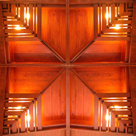 |
|||||||||
|
Telfair Museum of Art |
|||||||||
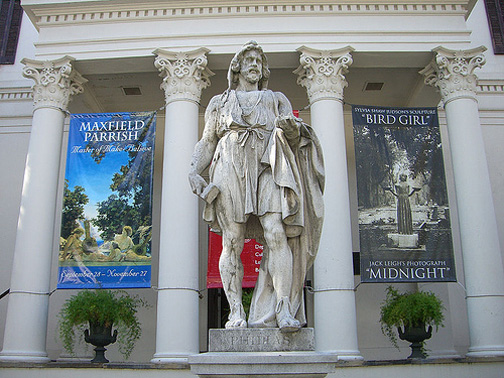 
Telfair Academy of Arts and Sciences | Jepson Center for the Arts | Owens-Thomas House 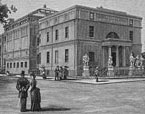 Telfair Museum of
Art, the oldest public art museum in the South, is housed in three
separate buildings. The Telfair Mansion, built for the Royal Governor's
son is 1818, was designed by English architect William Jay and, today,
contains many of the original furnishings. In 1883, an addition was
built, where exhibits of American and European paintings and sculpture
are displayed. Telfair Museum of
Art, the oldest public art museum in the South, is housed in three
separate buildings. The Telfair Mansion, built for the Royal Governor's
son is 1818, was designed by English architect William Jay and, today,
contains many of the original furnishings. In 1883, an addition was
built, where exhibits of American and European paintings and sculpture
are displayed.The Telfair Museum of Art traces its history from 1886 when the Telfair family home opened to the public as an art museum and school. It now boasts three diverse sites -- the original building, the Telfair Academy of Arts and Sciences, a National Historic Landmark building; the Owens-Thomas House, also a National Historic Landmark; and the recently completed Jepson Center for the Arts, a contemporary building which houses 20th- and 21st-century art. We will tour all three buildings, including a personal tour of the Telfair and Jepson Buildings by Steven High, the Director of the museum. 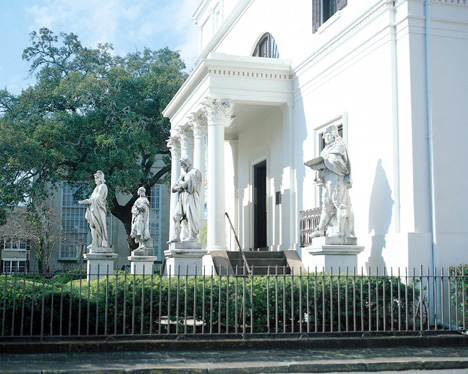  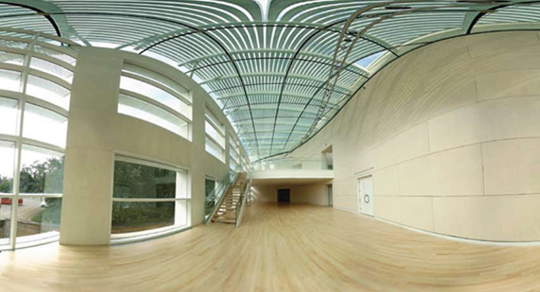 Jepson Center for the Arts  The
Telfair Museum of Art opened its new 64,000-sq. ft., state-of-the-art
building to the public in March 2006, across Telfair Square from the
original white-columned English Regency mansion. The new
64,000-square-foot building, the Jepson Center for the Arts, was the
first expansion in the Telfair’s 119-year history and added 16,000
square feet of additional exhibition space, including two sculpture
terraces and a 220-seat auditorium. The
Telfair Museum of Art opened its new 64,000-sq. ft., state-of-the-art
building to the public in March 2006, across Telfair Square from the
original white-columned English Regency mansion. The new
64,000-square-foot building, the Jepson Center for the Arts, was the
first expansion in the Telfair’s 119-year history and added 16,000
square feet of additional exhibition space, including two sculpture
terraces and a 220-seat auditorium. It was designed by Israeli-born Boston architect Moshe Safdie, whose contemporary building designs have been praised around the world, including the Vancouver Public Library, the Yad Vashem in Jerusalem, the Peabody Essex Museum in Salem, MA, the Boston Museum, Salt Lake City Public Library, and Crystal Bridges in Bentonville, AK. The Jepson Center is covered with glistening white Portuguese limestone and consists of two separate structures connected by glass bridges over a protected lane that is part of Savannah’s original town plan. The building has a soaring, light-filled atrium and sweeping, three-level staircase that provides access to its expansive galleries. Ceilings of glass panes hanging from cables beneath steel trellises cast a mixture of sunlight and shadows into the atrium, giving the blond maple floors a sense of drama. The Jepson is an organic piece of sculpture as well as a building. Safdie's modernist museum creates an environment that ranges from grand to intimate. Each of the Jepson's 10 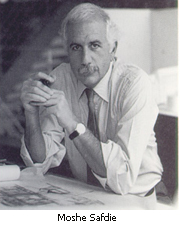 unusually shaped
galleries (there's
only one with all walls square) are equally engaging because each space
is different. The $24.5 million building is set close to the street,
and its three-story transparent facade, containing 6,264 square-feet of
glass, was intended to give visitors a panoramic view of Telfair square
as well as to offer passersby an enticing view into the lobby. unusually shaped
galleries (there's
only one with all walls square) are equally engaging because each space
is different. The $24.5 million building is set close to the street,
and its three-story transparent facade, containing 6,264 square-feet of
glass, was intended to give visitors a panoramic view of Telfair square
as well as to offer passersby an enticing view into the lobby.Safdie’s design with its exterior's curved and slanting walls initially proved too modernistic for the Historic Review Board, which regulates construction in the Historic Landmark District. In 2000, after two years of public wrangling over design changes, the board agreed to the current facade with less exterior glass. 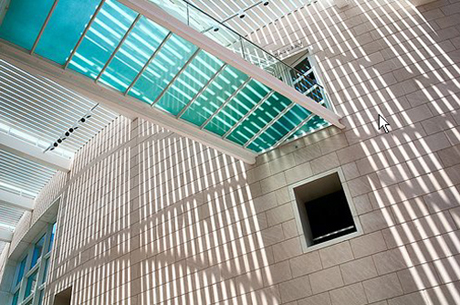 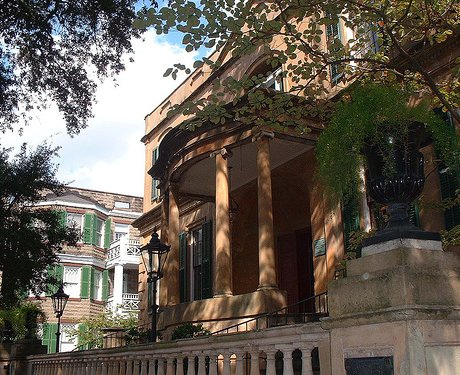 The Owens-Thomas House, one of the country's best examples of English Regency architecture, is located a short distance from the Telfair Academy. It is a historic house museum and displays a major portion of the Telfair’s decorative arts collection. Its carriage house includes an orientation gallery, a museum store, and rare intact urban slave quarters that have on view objects on long-term loan from the Acacia Collection of African Americana. 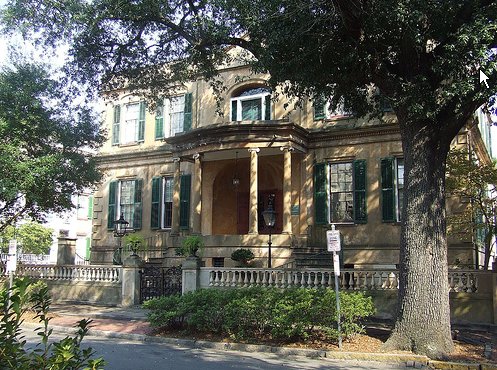 The house was designed by the young English architect William Jay (1792-1837), one of the first professionally trained architects practicing in the U.S. The elegant residence was built in 1819 for cotton merchant and banker Richard Richardson. Mr. Richardson's brother-in-law was 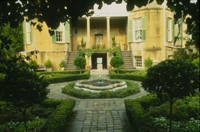 married to Ann Jay,
the architect's sister. married to Ann Jay,
the architect's sister.In 1830, congressman,
lawyer, and mayor of Savannah, George Welshman Owens, purchased the
property for $10,000. It remained in the Owens family until 1951 when
Miss Margaret Thomas, George Owens's granddaughter, bequeathed it to
Savannah's art museum, the Telfair Academy of Arts and Sciences. The
historic house, now called the Owens-Thomas House, is a National
Historic Landmark.

|
|||||||||
|
|||||||||
|
|
|||||||||
